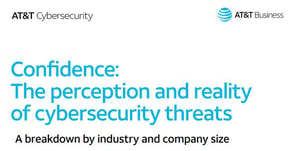
According to the latest from AT&T Cybersecurity, enterprise IT and boardrooms largely see eye-to-eye… and those eyes are watching some very common, yet pervasive, threats.
It’s critical that IT and key stakeholders are united in their view of cybersecurity and what it takes to protect the organization. According to the report Confidence: The perception and reality of cybersecurity threats from AT&T Cybersecurity (formerly AlienVault), a reasonable degree of alignment exists:
- 51% of SMB IT departments are mostly or completely in alignment with stakeholders
- 64% of enterprise IT are mostly or completely in alignment with stakeholders
While not perfect, this is a good indicator that organizations have the ability to make changes needed to protect themselves from cyber threats.
According to the report, nearly a third of both SMB and Enterprise organizations are concerned about phishing attacks as the number one threat. With phishing being the initial attack method for business email compromise (BEC), fraud, malware attacks, ransomware attacks, or other attacks involving social engineering, phishing is appropriately at the top of the list.
With this newly found alignment, organizations should address the phishing threat with a layered approach that follows the path of attack:
- Emails come in
- Users interact with them
- either social engineering, or
- malicious attachments or links are used to further the attack.
So, your strategy needs to first include email, web, and DNS scanning (to address steps 1 and 4). To address steps 2 and 3, organizations need Security Awareness Training to teach users how to be security-minded when interacting with email and how to spot socially engineered email content designed to elicit a response that benefits the attacker.
Organizations have a respectable level of alignment with stakeholders (with only 9% citing no alignment at all, according to the AT&T Cybersecurity report). It’s time to use this alignment, educate stakeholders on the methods attackers use to successfully attack, and put solution in place that will prevent threats from coming to fruition.






